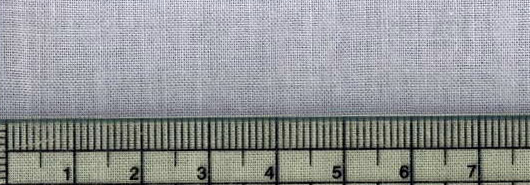



History
~ Revived! Legendary local Brand product ~
Around 1625, a boom in cotton cultivation occurred
From the 8th century, the mass populaces were wearing Nunoko (fabric made from hemp fibers).
Cotton, as well as silk, was too valuable to wear in those days as it was imported from Korea and China.
However, Mikawa cotton was first introduced to the Nara market in 1510, and the technique of cotton cultivation soon spread to Izumi and Kawachi, both in the Kansai area.
From 1573 to 1614, cotton took over from hemp fibers as the outfit material of the masses.
In 1627, the feudal Edo government proclaimed that “Farmer-wear should be made of cotton” so more and more joined in its cultivating,
not only in the vegetable fields, but also in the
ones for rice.
In 1642 the feudal government issued a
“Ban on cultivating cotton in rice fields”
as it feared a decreased in rice revenues.
Renowned brand "Izumi Cotton"

At the beginning of its cultivation, farmers used to trade the picked seeds “seed cotton” or seeds removed “ginned cotton”.
The remaining cotton was woven into outfits for family use.
Eventually, they began trading “linen cotton” as it fetched a higher premium.
From 1688 to 1763, cotton production had grown to such an extent that many silk weavers shifted to weaving cotton.
In 1810, the yearly gross cotton production of the Senshu area was 1 million rolls of cloth this grew further to a staggering 2 million for the years 1861 to 1863.
Having long, fine, high quality fibers, Izumi Cotton can be woven into a finer thread. It was highly prized for use in the best dyed towels, and the red lining cloth (dyed with safflower) for silk kimono. The cloth woven with Izumi Cotton was known as finest Sarashi-Momen (natural white cotton).
Declining cotton cultivation
Despite the “Ban on cultivating cotton in rice fields”, cotton cultivation was expanding smoothly.
However, it faced a big obstacle, “Kyoho Reforms” instigated by 8th Shogun Yoshimune.
In 1744, Haruhide Kanno, commissioner of finance, who remains notorious to this day, famously said “the more I squeeze sesame and farmers, the more I get oil and harvest”.
He issued the “Cotton cultivation in rice fields law” when he was an inspector for the Senshu area.
The said law imposed an agricultural tax on cotton farmers regardless of the amount of cotton produced. It was instead based on the best rice harvest volume in the village that same year. From 1751 to 1771, cotton cultivation was totally devastated.
Later, cotton cultivation declined due to fertilizer price increases.
A brief respite in 1871, as the “Undesignated crops cultivation in rice field law” temporarily permitted and revived cultivation.
However, in 1896, the import tax on cotton was abolished and cotton crops were replaced by vegetables.
Lost legendary local product

Though the Izumi Cotton weaving industry had already been developed. Improved machinery drastically increased production efficiency and quality. However yarn spinning shifted from by hand to spinning by machine with mixed fibers. Cloth also shifted to half cotton (cloth woven from half imported fibers). Gradually the imported cotton took over and “Izumi Cotton” disappeared.
Afterwards mass production was triggered by the construction of cotton-mills and installation of power looms.
This boosted Senshu as the Japan’s No. 1 district; producing about 50 % of the nations’ cotton textile. However that said “Izumi Cotton” itself was lost, becoming a legendary local product of the past.
Reviving for the next generation
Times moved on, into the modern Showa from the Taisho era, during the chaotic postwar period there was a boom; which some called “Gacha man”. “Gacha” is derived from the sound of weaving machinery and “man” is from money. The word means making a fortune.) This industry developed smoothly through the high-growth period, but products imported from China and other Asian countries since 1975 have since damaged this growth.
Today, the percentage of cotton goods which are imported is over 90%. The nation’s No. 1 textile district, Senshu is in danger of being unable to continue its production for the next generation.
Because of this situation, young executives have established inter-industrial exchange groups (the Izumi Cotton society, 3S society and CS society). They are playing an active role to revive “Izumi Cotton”and pass it down to next generation, not only the materials but also exciting new products.



